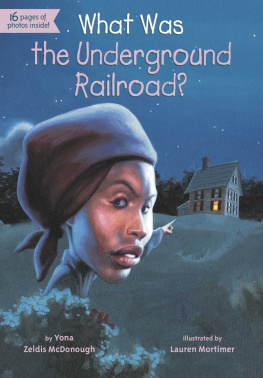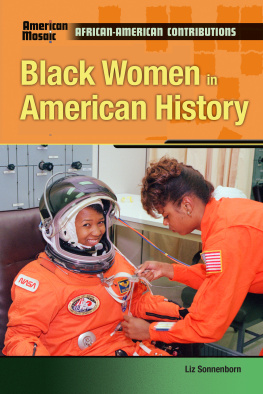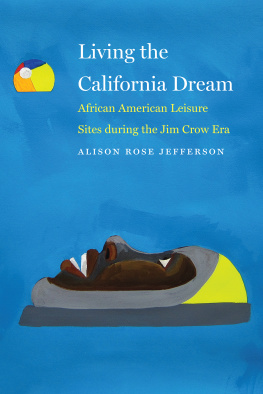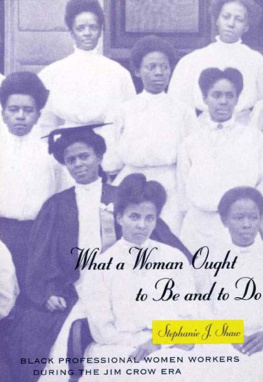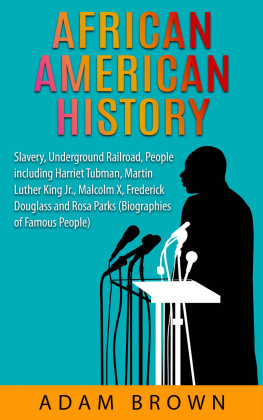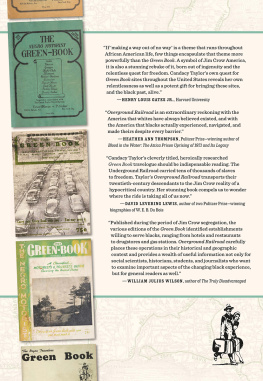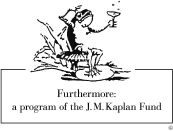Contents
List of Figures
Page List
Guide

Riding Jane Crow
WOMEN, GENDER, AND SEXUALITY IN AMERICAN HISTORY
Editorial Advisors:
Susan K. Cahn
Wanda A. Hendricks
Deborah Gray White
Anne Firor Scott, Founding Editor Emerita
A list of books in the series appears at the end of this book.
2022 by the Board of Trustees
of the University of Illinois
All rights reserved
This publication is made possible with support from Furthermore: a program of the J. M. Kaplan Fund.
Library of Congress Cataloging-in-Publication Data
Names: Thaggert, Miriam, author.
Title: Riding Jane Crow : African American women on the American railroad / Miriam Thaggert.
Other titles: African American women on the American railroad | Women, gender, and sexuality in American history.
Description: Urbana : University of Illinois Press, 2022. | Series: Women, gender, and sexuality in American history | Includes bibliographical references and index.
Identifiers: LCCN 2021059030 (print) | LCCN 2021059031 (ebook) | ISBN 9780252044526 (cloth ; alk. paper) | ISBN 9780252086595 (paperback) | ISBN 9780252053528 (ebook)
Subjects: LCSH: African American womenUnited States History. | Railroad travelUnited StatesHistory. | African AmericansLegal status, laws, etc. | United StatesRace relations.
Classification: LCC E185.86 .T385 2022 (print) | LCC E185.86 (ebook) | DDC 305.896/073dc23/eng/20211215
LC record available at https://lccn.loc.gov/2021059030
LC ebook record available at https://lccn.loc.gov/2021059031
For Mom, Always
Contents
Acknowledgments
Everyone has a train story. I am blessed that I am able to add this book to my own collection of railroad tales. Id like to recognize a large community of supportive colleagues, friends, and family who helped me on this journey.
There were several readers of the manuscript or sections of the manuscript at the University of Iowa, including Bluford Adams, Jill Davis, Kathleen Diffley, Mary Lou Emery, Claire Fox, Ellen Lewin, Judith Pascoe, Laura Rigal, Phillip Round, Leslie Schwalm, Claire Sponsler, Susan Stanfield, Doris Witt, and Catherine A. Stewart of Cornell College. Id also like to thank Florence Boos, Lori Branch, Matthew Brown, Jennifer Buckley, Corey Creekmur, John DGata, Cherie Hansen-Rieskamp, Kevin Kopelson, Marie Kruger, Teresa Magnum, Christopher McMillan, Dee Morris, Peter Nazareth, Horace Porter, Robyn Schiff, Jennifer Sessions, Anne Stapleton, Garrett Stewart, Rachel Williams, and Fred Woodward. Librarians at the University of Iowa, Amy Chen and Janalyn Moss, were always ready to answer my questions. A Developmental Studies Hybridoma Bank (DSHB) Fellowship at University of Iowa was helpful as I completed portions of the book. A very special thank-you to my friend and colleague Janette Taylor.
At SUNY-Buffalo, readers of the manuscript included Carrie Bramen, director of the Gender Institute; Stacy Hubbard; Cristanne Miller; and Victoria Wolcott. For their support, I thank Rachel Ablow, David Alff, Barbara Bono, Susan Eilenberg, Cecil Foster, Judith Goldman, Walter Hakala, Jim Holstun, Damien Keene, Chad Levin, Ruth Mack, Carine Mardorossian, Patricia Matthew, Elizabeth Mazzolini, Theresa McCarthy, Kristen Moore, Eric Pritchard, William Solomon, Lillian Williams, and Despina Stratigakos with the Office of Inclusive Excellence. A very special thank-you goes to my writing partner and colleague Nicole Morris-Johnson.
A fellowship at the Newberry Library was fundamental to the initial ideas in the book; the time and people I met there will always be special to me. Id like to especially thank D. Bradford Hunt, JoEllen Dickie, Diane Dillon, Kristen Emery, Keelin Burke, and the amazing fellows I met during my fellowship year. Alex Schneider introduced me to the world of railroad model and history enthusiasts and helped me identify the time period of trains and compartments.
A fellowship at the Virginia Humanities and the University of Virginia enabled me to delve more deeply and significantly into the lives and experiences of the waiter carriers of Virginia. It also very importantly gave me time to experiment with how to tell their stories. Id like to thank Susan Bratton, John Deal, Don DeBats, Matthew Gibson, Russell Halley, Deborah Lee, Dianne Martin, Rich Martin, Deborah McDowell, Ann B. Miller, Brenda Marie Osbrey, Justin Read, Aron Shetterly, Jeanne Siler, Jane Smith, Edwina St. Rose, and Earl Swift. I am very much indebted to Gloria Johnson Gilmore and Doretha Taylor Dickerson for sharing their knowledge of the waiter carriers, Gordonsville, and Black Virginia with me and for giving me a memorable personal tour of Gordonsville (and nearby areas). Psyche A. Williams-Forson graciously offered feedback on a section of the waiter carriers chapter presented at a conference.
I had the opportunity to participate in Georgetown Universitys Second Book Institute, directed by Robert Patterson and supported by the dean of Georgetown College, Christopher S. Celenza.
Several people drew my attention to the images that appear in the book or granted permission to use the images. Id like to thank Larry Z. Daily, Earnestine Jenkins, Lisa Renee Johnson, Gloria Johnson Gilmore, Jane Smith, and the following institutions: the David Rumsey Historical Map Center of Stanford University, the Newberry Library, the California State Railroad Museum, the Library and Archives of Canada, the Minnesota Historical Society, the Estate of Pauli Murray, and the Virginia Museum of History and Culture. There were several archives that I consulted but did not quote or reference within the text. These include the A. Phillip Randolph Papers at the Library of Congress and the Mississippi Department of Archives and History in Jackson, Mississippi.
Scholars and colleagues offered expert guidance and feedback along this trip, including Maria Cotera, Madhu Dubey, Daylanne English, Sheri Englund, Rachel Farebrother, Nathan Grant, Thabiti Lewis, Barbara McCaskill, Koritha Mitchell, Joycelyn Moody, William Pretzer, Amy Richter, Phillip Round, Shawn Michelle Smith, Valerie Smith, Ann Twinam, and Ben Vinson. Noaquia Callahan shared some of her archival work on Mary Church Terrell.
Portions of this research were presented at talks given at Rutgers UniversityNew Brunswick and the University of Georgia. I thank Carter Mathes, Evie Shockley, and Cheryl Wall (Rutgers); and Nell Andrew and Susan Rosenbaum (Georgia).
Dawn Durante expressed interest in the book when it was still a hazy idea, read early chapters, and discussed the book with me several times over the years. I am deeply appreciative of her engagement and support. The manuscript then came into the expert hands of Dominique J. Moore, Alison K. Syring, and Ellie Hinton of the University of Illinois Press.
Finally, for keeping me on track, literally and figuratively, and for listening to me talk about the railroad book, I thank my friends and family, including my parents; M. M. Smith; Sheila; Florence; Rachel; Thuc Tran and James, Jessica, Jonathan, Jackson, Jillian, and Sister Therese; and Henry, Tammy, Kat, Sunny, and Lucy.
Riding Jane Crow
Introduction
Off the Tracks: Race, Gender, and the American Railroad
Trains at the station, I heard the whistle blow
The trains at the station, I heard the whistle blow



